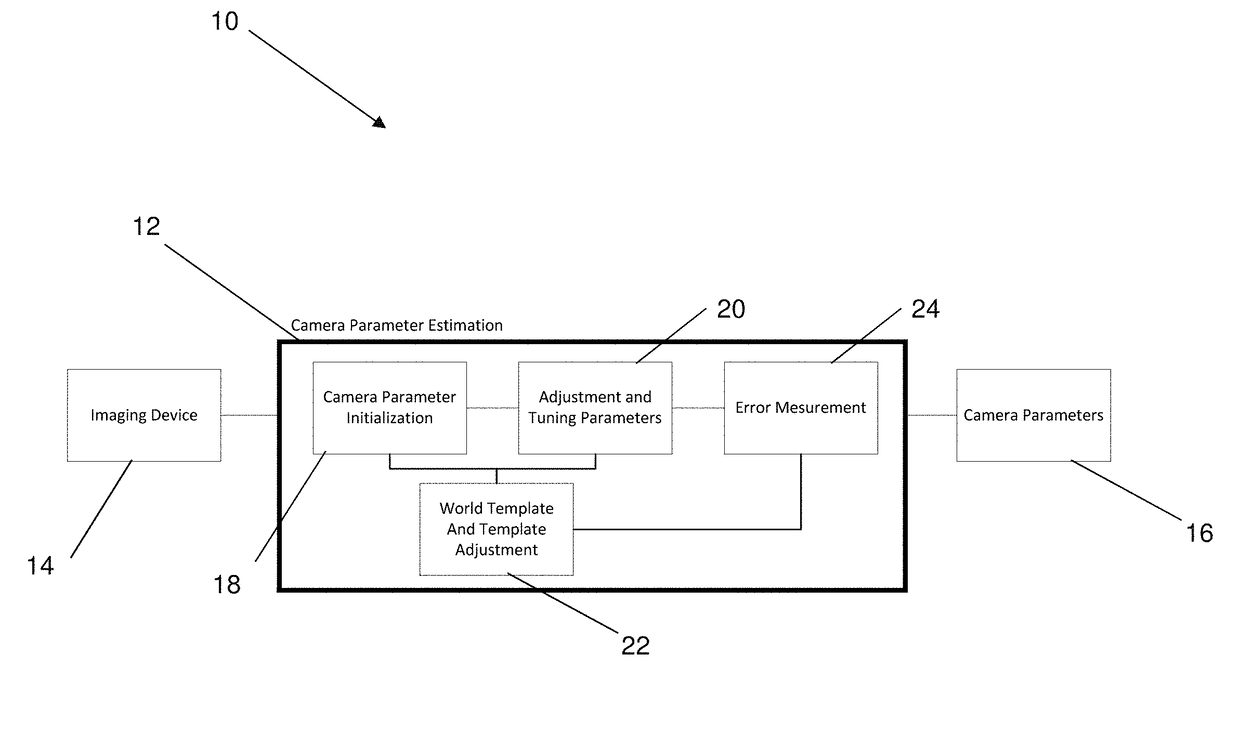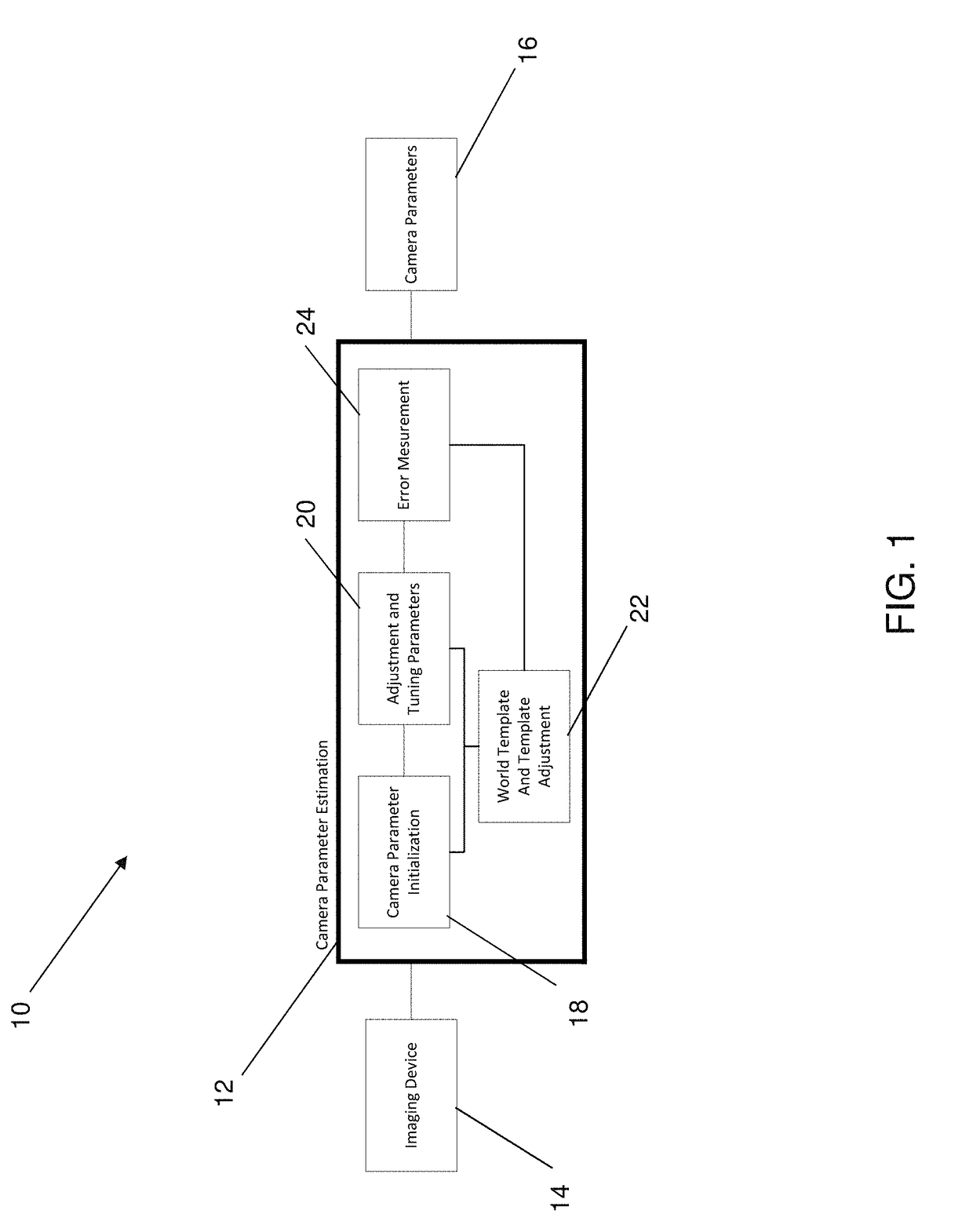Systems and Methods for Automated Camera Calibration
a technology of automatic camera calibration and system, applied in the field of system and method for automatic camera calibration, can solve the problems of difficult detection and localization of image features that correspond to arbitrary objects across multiple images, affect the ability to recognize features, and current imaging devices are susceptible to noise, blur, distortion, etc., and achieve the effect of maximizing similarities
- Summary
- Abstract
- Description
- Claims
- Application Information
AI Technical Summary
Benefits of technology
Problems solved by technology
Method used
Image
Examples
Embodiment Construction
[0031]The following relates to methods and systems for iteratively estimating the ground plane, camera parameters and planar homography transformation in a sequence of images. The method includes receiving an image from an imaging device or a camera of 3D objects or 2D planes with known dimensions, referred to herein as “templates”.
[0032]Two iterative camera parameter adjustment techniques are presented for optimizing the alignment between the image and the object template. The camera parameters and planar homography transform estimation are being updated using an iterative process at every image frame, by either considering point correspondence or by maximizing mutual information between the template target and the image frame.
[0033]It can be appreciated that although the principles set forth herein are described in the context of videos (or images) of sport fields using a regular camera device, the techniques can be applied to any other applications such as simultaneous localizati...
PUM
 Login to View More
Login to View More Abstract
Description
Claims
Application Information
 Login to View More
Login to View More - R&D
- Intellectual Property
- Life Sciences
- Materials
- Tech Scout
- Unparalleled Data Quality
- Higher Quality Content
- 60% Fewer Hallucinations
Browse by: Latest US Patents, China's latest patents, Technical Efficacy Thesaurus, Application Domain, Technology Topic, Popular Technical Reports.
© 2025 PatSnap. All rights reserved.Legal|Privacy policy|Modern Slavery Act Transparency Statement|Sitemap|About US| Contact US: help@patsnap.com



